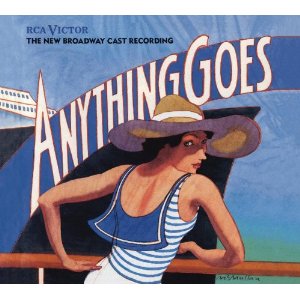SITE GUIDE
SEARCH
REVIEWS
REVIEW ARCHIVES
ADVERTISING AT CURTAINUP
FEATURES
NEWS
Etcetera and
Short Term Listings
LISTINGS
Broadway
Off-Broadway
NYC Restaurants
BOOKS and CDs
OTHER PLACES
Berkshires
London
California
New Jersey
DC
Philadelphia
Elsewhere
QUOTES
TKTS
PLAYWRIGHTS' ALBUMS
LETTERS TO EDITOR
FILM
LINKS
MISCELLANEOUS
Free Updates
Masthead
A CurtainUp Review
The Testament of Mary
|
"My son gathered misfits, although he himself was not a misfit." — Mary
|

Fiona Shaw |
Before the play proper begins, audience members are invited to go on stage, to get a glimpse of Shaw enclosed in a shrine-like cubicle, looking every inch a statue. This pre-show business seemed to me like a nod to the old pageant plays. But historical déjà vu aside, it also makes you see Mary in a desperately static situation.
This silent prelude also begs the question: Has the iconic woman become too fixed in our collective imagination? Has the Virgin Mary become so revered by the faithful for two millennia that everybody has forgotten that she was once a flesh-and-blood human being?
No matter how you view it, Shaw’s portrayal of Mary in this 90-minute monologue will expand your idea of who she was. Perhaps it will clarify why she has never been able to assert her self, that is, until now.
You don’t need to read Toibin’s novella to grasp the goings on at the Walter Kerr. The stage adaptation can be taken on its own terms. But Toibin’s book can really prep you for watching The Testament of Mary on stage given its use of Joycean stream-of-consciousness style that has Mary talking paragraphs ahead of herself.
Page or stage, this is an emotionally intense portrait of Mary. The focus is on the time after the crucifixion in Ephesus, when two of her son’s followers were taking care of her.
In many ways what we get is an inversion of the traditional Mary, a woman who stubbornly persists in being contrary. There are dozens of examples of her non-submissiveness, but three are glaringly at odds with the New Testament: 1) She doesn’t believe that her son is the son of God. 2) She sees his disciples as socials misfits. 3) She’s not convinced about the validity of her son’s miracles, and wonders if the water that he supposedly changed into wine at the Canaan wedding feast is a fiction. In short, she’s a woman with a mind and heart of her own.
Tom Pye’s set has an arresting preternatural aura about it. It is coherently eclectic. Its cubicle, plain chairs, a small well is dominated by an imposing tree with a barky shape that hauntingly evokes the tree Christ was crucified on. There’s one striking living prop: a large hawk, which at the play’s outset, perches on Shaw’s arm and infuses an otherworldly mood into the proceedings.
Jennifer Tipton’s inspired lighting adds a twin balance of harsh light and dark shadows. Ann Roth’s costumes are simply done, with Shaw either wearing traditional Hebrew robes or an inky-black long dress.
Ultimately, what makes this intermissionless piece memorable is the Shaw's powerful performance. She is an actor who has, in many ways, cornered the market on strong-minded women. The last time she was seen on Broadway was in in 2003 when she portrayed Medea, the epitome of female fury and revenge. She did return to New York in 2008 as Winnie of Happy Days, a woman trapped in sand up to her neck, but capable of keeping her hope alive. To the There she portrayed To this pair, we can now add the Virgin Mary. As inhabited by Shaw, Mary has a propensity for probing beneath the surface of things, and isn’t afraid to swim against the current.
This Mary is nothing like the Madonna found on a Christmas-card that you pluck off the rack at your local Hallmark store. By granting her the freedom of expression, Tobin has made her real and given new meaning to the odyssey she undertakes. Obviously , The Testament of Mary isn't going to touch everyone deeply or is it likely to satisfy their idea of an entertaining Broadway outing. But those who can embrace Fiona Shaw's Mary won't soon forget her.
|
Written by Colm Toibin Directed by Deborah Warner Cast: Fiona Shaw (Mary) Sets: Tom Pye Costumes: Ann Roth Sound: Mel Mercier Lighting: Jennifer Tipton Stage Manager: Michael J. Passaro The Walter Kerr Theater at 219 W. 48th Street. Tickets: $50-$135. Phone: 212/239-6200 or visit www.telecharge.com From 3/26/13; opening 4/22/13; open run Tuesday @ 7pm Wednesday @ 2pm & 8pm; Thursday @ 7pm; Friday @ 8pm; Saturday @ 2pm & 8pm; Sunday @ 3pm. Running time: 90 minutes with no intermission Reviewed by Deirdre Donovan based on press performance of 4/20/13 > |
| REVIEW FEEDBACK Highlight one of the responses below and click "copy" or"CTRL+C"
Paste the highlighted text into the subject line (CTRL+ V): Feel free to add detailed comments in the body of the email. . .also the names and emails of any friends to whom you'd like us to forward a copy of this review. Visit Curtainup's Blog Annex For a feed to reviews and features as they are posted add http://curtainupnewlinks.blogspot.com to your reader Curtainup at Facebook . . . Curtainup at Twitter Subscribe to our FREE email updates: E-mail: esommer@curtainup.comesommer@curtainup.com put SUBSCRIBE CURTAINUP EMAIL UPDATE in the subject line and your full name and email address in the body of the message. If you can spare a minute, tell us how you came to CurtainUp and from what part of the country. |

Slings & Arrows- view 1st episode free
 Anything Goes Cast Recording
Anything Goes Cast RecordingOur review of the show
 Book of Mormon -CD
Book of Mormon -CDOur review of the show

